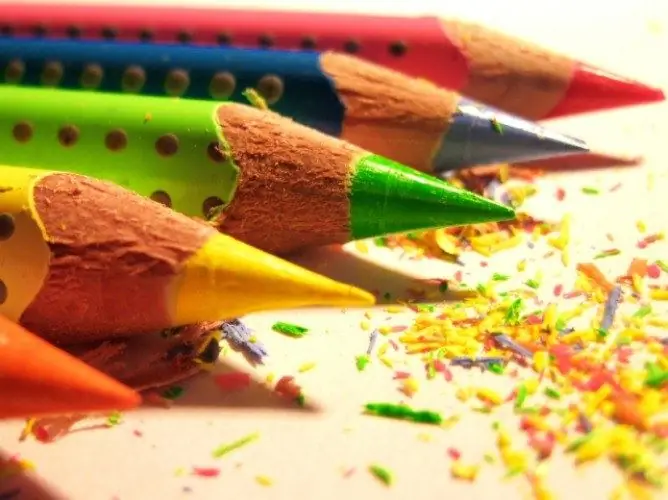Those who have mastered the basics of drawing are eager to hone their skills and learn how to create real masterpieces. You can achieve perfection in pencil drawing if you select human figures as an object. The image in the drawings of people allows you to develop an eye and get an invaluable creative experience, which will help you create bright artistic compositions later.

It is necessary
- - paper;
- - a set of colored pencils;
- - eraser;
- - a model for drawing.
Instructions
Step 1
Please note that a person as an object of a pencil drawing is rather difficult to execute. Don't try to depict the whole human figure right away. Start by sketching simple geometric shapes, as this teaches you how to maintain the correct proportions. Only after that is it recommended to start drawing contour lines.
Step 2
Find a suitable object to paint. It can be a living model, sculpture or photograph of a person. At first, it will be best if the object is not dynamic, but motionless. Consider nature carefully. Note as many details as possible. While drawing, try to check with the model as often as possible - this will make the image closer to the original.
Step 3
To begin with, however, practice drawing individual features of a person's face. Draw eyes, nose, mouth, auricle. Sketches do not need to be painted over or shaded heavily; the main thing is to learn how to correctly select the proportions and add volume to the image. Leave the places where the light falls white. Shade elements that are in the shadow with very light shading. It is best to use a soft pencil for these purposes.
Step 4
When you start drawing the entire shape, first sketch the general outlines of the body, depicting them in the form of simple geometric shapes, such as circles and ovals. Do not fixate on the details, try only to convey the proportions correctly. Do not erase the mistakenly drawn lines with an eraser yet, but just correct with a pencil. When you are convinced that the proportions are correct, combine the geometric shapes with an outline.
Step 5
Mark the folds of the garment with light lines without pressing. It is recommended to paint over clothes with one pale layer of the appropriate color. Where the folds curl inward, apply shadow. Leave glare in the places where the light flux falls. Fill in the dark areas with additional hard strokes. This will give the opportunity to emphasize the volume and add depth to the drawing.
Step 6
As your skill grows, try moving to depicting people in motion. It also has its own subtleties and artistic techniques. For example, to depict a skier racing down a slope, you need to give the athlete's pose a dynamic tilt and use blurry shading. As you gain experience, you will be able to please your friends with your drawings and will surely earn a reputation as a true professional in the field of graphics.






